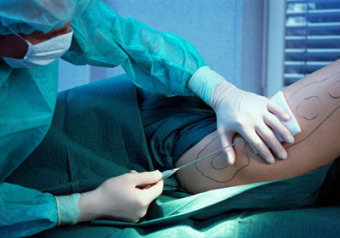Laser Liposuction & Skin Tightening - Emperor's New Clothes?
 Does laser assisted liposuction really provide all of the skin tightening benefits that the manufacturers claim?
Does laser assisted liposuction really provide all of the skin tightening benefits that the manufacturers claim?
We are in pursuit of many Holy Grails in plastic surgery, from scarless post-surgical healing, non-invasive liposuction and implant-free breast augmentation to non-invasive skin tightening. With the advent of laser-assisted liposuction (LAL) came the promise from the manufacturers that we have finally achieved a way of combining "minimally invasive" fat removal with skin tightening, sensationally treating two maladies with one procedure.
I been involved with LAL for many years, and it has been the primary revenue driver in my practice for nearly five years running. I began to perform the procedure when the machines became powerful enough to actually generate enough subdermal heat in a timely fashion to potentially create significant collagen remodeling and hopefully result in skin tightening. My case load quickly became large enough that I was asked to be a national speaker for one of the dominant laser companies educating other physicians on the use of LAL. As such, I delved into every published paper even remotely relating to heat-generated skin tightening and laser assisted liposuction. Over the years, I have been able to merge a huge surgical experience with the science behind the procedure and draw some fairly clear and simple conclusions on the issue of skin tightening.
Setting up a patient for potential skin tightening is fully dependent on generating ample subdermal heat to initiate collagen denaturation and subsequent remodelling. Generally, this temperature is felt to be between 40 to 45 degrees celsius. At around 47 degrees celsius, skin blistering and burns occur. With proper time, temperature-monitoring devices, and careful technique, adequate temperatures can be achieved. Getting the skin to this temperature range takes time and significantly prolongs the procedure. Additionally, the risk of seroma escalates the longer you spend with the tissues in this temperature range in my experience.
In about 15% of cases, I see clinically visible skin tightening which I don't feel I would have seen using other techniques. This skin tightening is not the equivalent of excision techniques, but typically limited and subtle. This is obviously purely my subjective opinion to be clear, and I cannot say that these same results may not have occured witht the same frequency had I used other liposuction techniques.
The science of LAL and skin tightening is clear that some tightening does occur and is quantifiable. But this does not predictably translate into clinical relevance. I have now performed nearly 1000 LAL's and no longer educate my patients that LAL is a good method of tightening skin. The limited degree of tightening I credit LAL for is not enough to call it a clinically relevant skin tightening procedure. The majority of new LAL consults in my practice present with the impression that LAL is going to tighten up their loose skin while removing fat. The notion is dominant on the internet and even in print ads. I politely educate them that although there may indeed by some skin tightening, this will be subtle at best. In my opinion, the advantages of LAL lie elsewhere, particularly in a somewhat easier recovery.
I continue to hear from colleagues who also use LAL that they believe in the skin tightening. I don't know if this is a case of "The Emporers New Clothes" or not. I have pushed the envelope in terms of thoroughly heating up the skin to appropriate temperatures and length of time, but only see minimal tightening and an increase number of seromas. I continue to use LAL heavily but no longer tout skin tightening as being an expected end point.